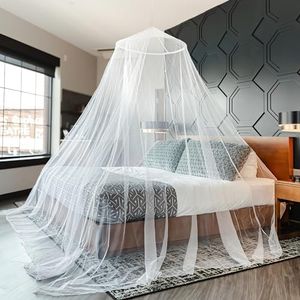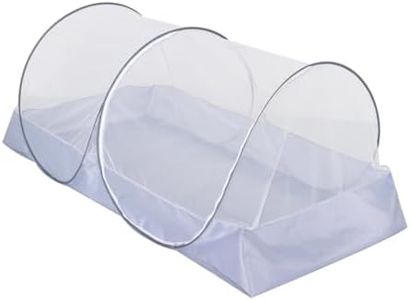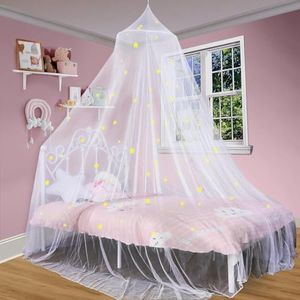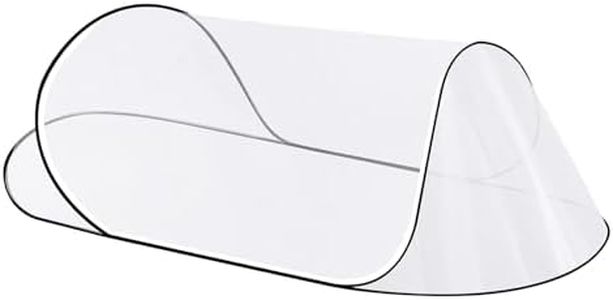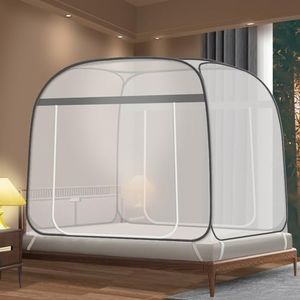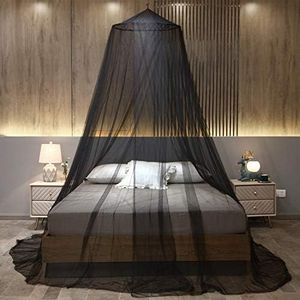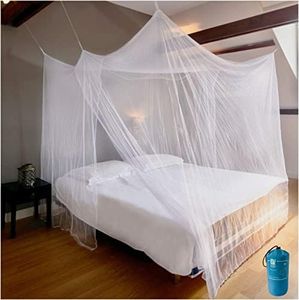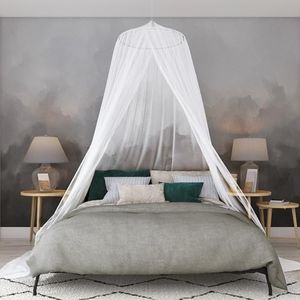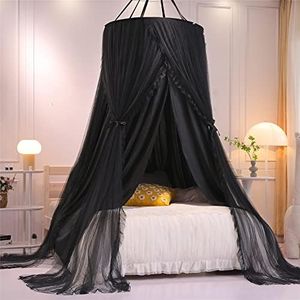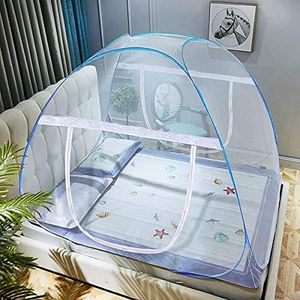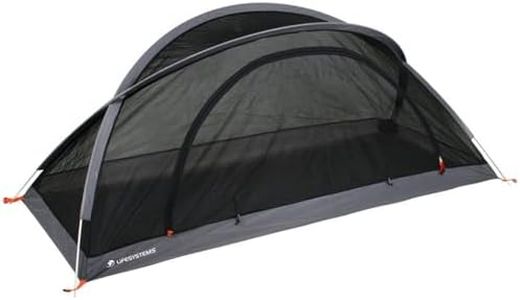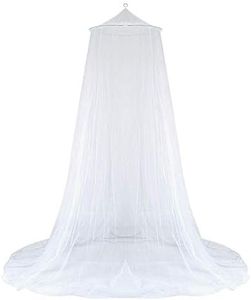We Use CookiesWe use cookies to enhance the security, performance,
functionality and for analytical and promotional activities. By continuing to browse this site you
are agreeing to our privacy policy
10 Best Mosquito Nets For Beds
From leading brands and best sellers available on the web.Buying Guide for the Best Mosquito Nets For Beds
Choosing a mosquito net for your bed can make a big difference in ensuring a comfortable and mosquito-free sleep. There are various options available and understanding what makes each suitable for a certain need ensures you end up with one that fits your bed, room, and lifestyle. By paying attention to the key features, you can select a net that offers maximum protection while being easy to use and maintain.Size and DimensionsThe size of the mosquito net determines whether it will fit over your bed properly. It's important for the net to completely cover the bed, draping down to the floor or tucking under the mattress to keep mosquitoes out. Nets generally come in sizes corresponding to standard beds like single, double, queen, or king. Measure your bed before shopping. If you have a taller mattress or a four-poster bed, look for nets that offer extra height or adjustable lengths. The right size ensures full protection and ease of use.
Mesh Density (Hole Size)Mesh density refers to the size of the holes in the net and is usually measured in holes per square inch. A higher mesh density means smaller holes, which blocks even tiny mosquitoes but still allows for air flow. Typical ranges are from 156 to 400 holes per square inch. Lower mesh density allows better airflow but may not keep out smaller insects, while higher density offers better protection but can feel warmer. Choose the mesh based on the types of insects in your area and your need for ventilation—high density if you want maximum protection, or lower density if ventilation is a priority.
MaterialMosquito nets are commonly made from polyester, cotton, or nylon. Polyester and nylon are lightweight, strong, and dry quickly if you need to wash them. Cotton is softer and can feel more comfortable but is heavier and takes longer to dry. Choosing the material depends on your climate and personal preference for texture or maintenance. Select synthetic materials for ease of care and portability, or cotton if you value a more natural feel.
Ease of InstallationInstallation style affects how easily you can set up, remove, or relocate your net. Nets can be freestanding, hung from a single point, or require multiple hooks in the ceiling or walls. Some come with pop-up frames for instant use. Consider how often you'll move the net or if you're renting and can't drill into walls. If you value portability or frequent changes, a pop-up or single-point net might be best, whereas permanent, multi-point installations work for long-term solutions.
Entry DesignThe way you get in and out of the net matters for convenience and continuous protection. Nets may have overlapping flaps, zippers, or Velcro closures. Overlapping flaps are simple but may shift, zippers provide secure closure but need gentle handling, and Velcro is quick but may wear down. For nightly use, a secure closure like a zipper helps prevent gaps, while flaps may be enough for occasional use or if you want silence at night.
Treatment with InsecticideSome mosquito nets are treated with insecticides to give extra protection by killing insects on contact. This is especially important in areas with a high risk of mosquito-borne diseases. If you want additional security, look for nets with certified insecticide treatment, but check if re-treatment is necessary over time. However, if you prefer chemical-free living or have sensitivities, choose an untreated net.

